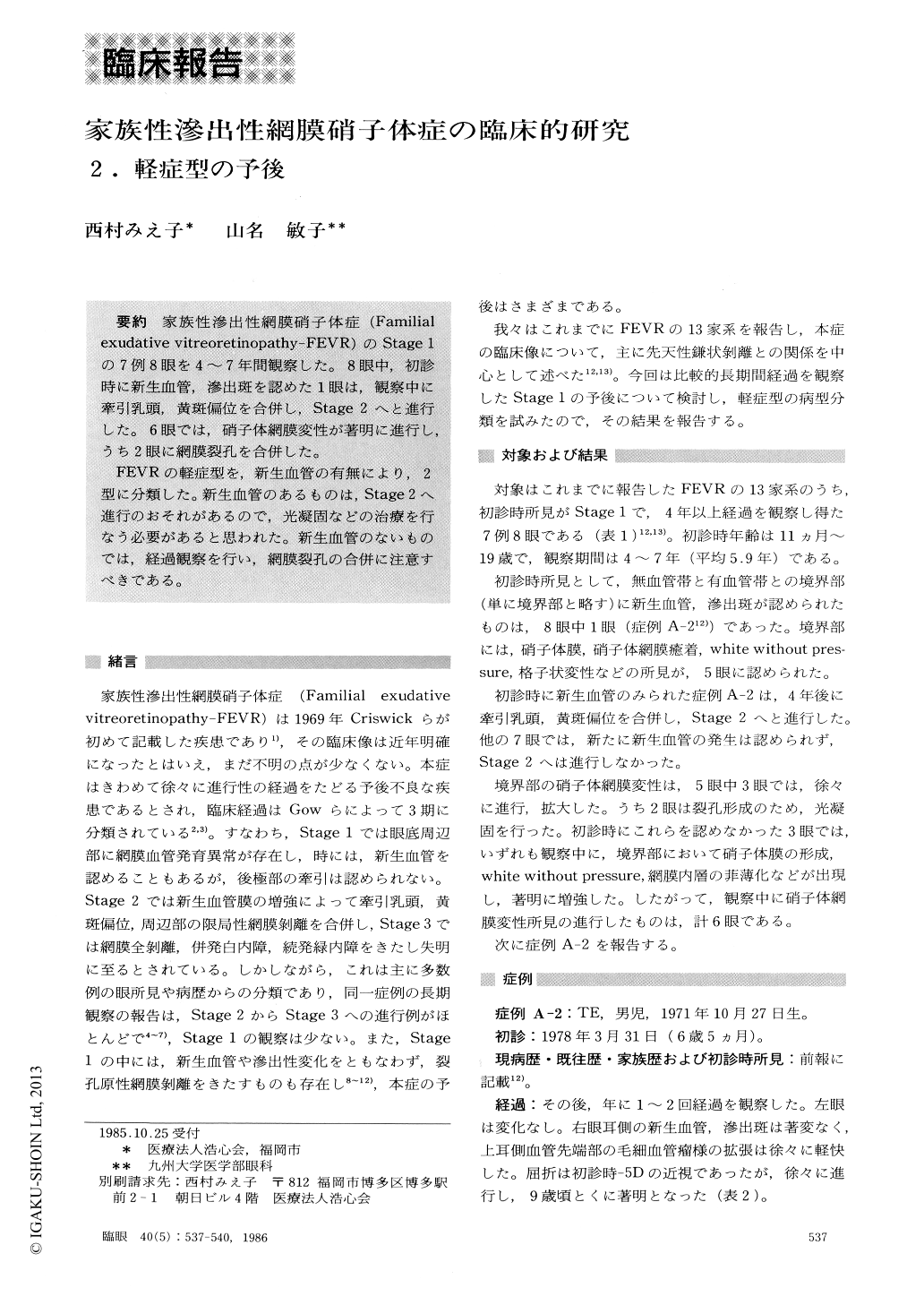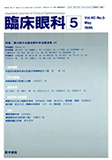Japanese
English
- 有料閲覧
- Abstract 文献概要
- 1ページ目 Look Inside
家族性滲出性網膜硝子体症(Familialexudative vitreoretinopathy-FEVR)のStage 1の7例8眼を4〜7年間観察した.8眼中,初診時に新生血管,滲出斑を認めた1眼は,観察中に牽引乳頭,黄斑偏位を合併し,Stage 2へと進行した.6眼では,硝子体網膜変性が著明に進行し,うち2眼に網膜裂孔を合併した.
FEVRの軽症型を,新生血管の有無により,2型に分類した.新生血管のあるものは,Stage 2へ進行のおそれがあるので,光凝固などの治療を行なう必要があると思われた.新生血管のないものでは,経過観察を行い,網膜裂孔の合併に注意すべきである.
We follow up 7 cases (8 eyes) with familial exudative vitreoretinopathy (FEVR) over a period of 4 to 7 years. The ages of the patients ranged from 11 months to 19 years at the start of the study. All the cases manifested stage 1 FEVR initially, with avascular zone and super-numerous vascular branchings in the peripheral retina. In 5 out of 8 eyes, there were vitreous membranes or opacities, vitreoretinal adhesion, white-without-pres-sure, and/or snailtrack degenerations along the border-line between the avascular and vascularized retina. One eye manifested intraretinal exudate and neovasculariza-tion in the temporal equator (Case A-2).
During the period of observation, vitreoretinal degen-erations developed or became more pronounced in 6 out of 8 eyes. Retinal break developed in 2 eyes. Dragged disc and heterotropia of the macula developed in one eye (Case A-2) 4 years later at the age of 10 years.
The findings indicate that eyes with retinal neovas-cularization would need treatment with photocoagula-tion as traction to the posterior retina would develop during childhood. In eyes without neovascularization, formation of retinal breakes and rhegmatogenous retinal detachment are major risk factors of FEVR.
Rinsho Ganka (Jpn J Clin Ophthalmol) 40(5) : 537-540, 1986

Copyright © 1986, Igaku-Shoin Ltd. All rights reserved.


